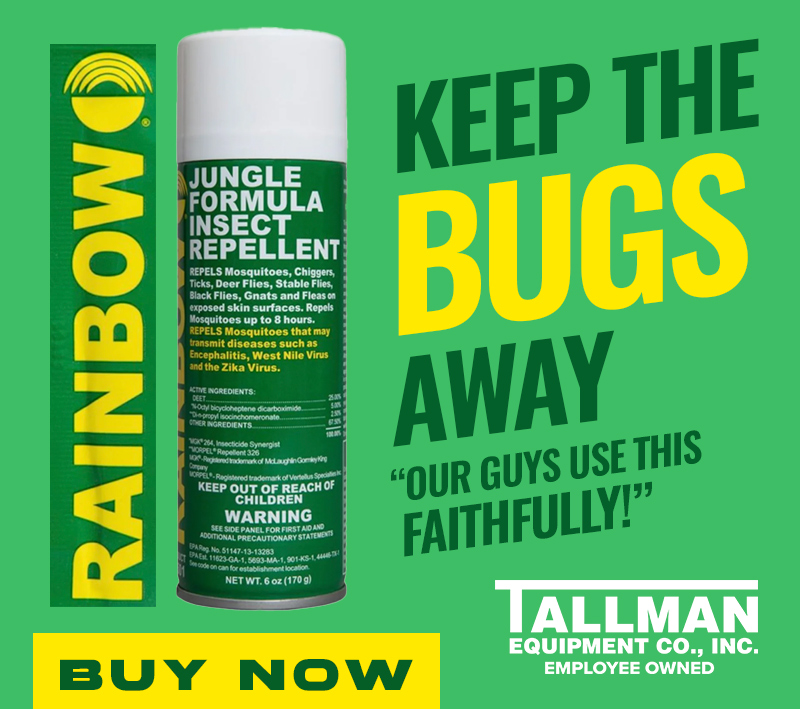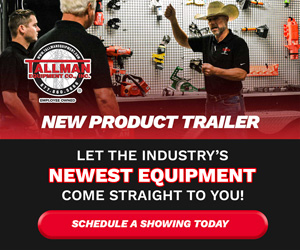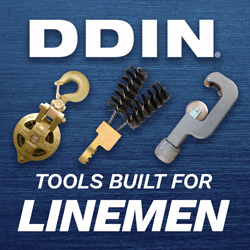Maintaining Safety on Your Job Site with OSHA Approved Tools
Maintaining safety on a job site is of utmost importance for utility construction companies. Accidents and injuries can not only result in harm to employees, but they can also lead to costly fines and legal liabilities. That is why it is essential to use the necessary tools and equipment to comply with OSHA regulations, especially in the field of lineman climbing gear.
Using the right tools plays a crucial role in preventing accidents and injuries in the workplace. These tools are designed and manufactured with specific safety features and should be implemented according to OSHA regulations. By following OSHA’s guidelines, construction professionals can significantly reduce the risk of accidents and ensure a safer working environment.
One of the main reasons why using tools and equipment designed to OSHA standards is necessary is that they have undergone rigorous testing and the user can have confidence in them in the field. These tools are designed to prevent common accidents and injuries, such as falls, electrocution, and equipment malfunctions. They are equipped with features like non-conductive handles, adjustable safety harnesses, and robust construction to withstand the demands of the job site.
Furthermore, complying with OSHA standards and regulations provides peace of mind to both employers and employees. Employers can rest assured that they are providing their team with reliable and safe equipment, minimizing the likelihood of accidents. On the other hand, employees can feel confident in their working conditions, knowing that their employer is committed to their safety.
[H2] What Does OSHA Require?
When it comes to ensuring workplace safety, compliance with Occupational Safety and Health Administration (OSHA) regulations is crucial. In the electrical transmission and distribution industry, where the risks are high, it is essential to adhere to OSHA guidelines to maintain a safe working environment. One aspect of OSHA compliance is the use of the right tools and equipment. But what tools and equipment are required?
OSHA does not approve specific tools or equipment, but it lays out safety requirements for various working scenarios. For example, for linemen working at heights, OSHA has established regulations regarding the need for fall restraint systems above certain heights and appropriate anchorage points for fall restrictors. OSHA also establishes standards by which such safety gear should be tested. By using the appropriate tools and equipment, such as lineman climbing gear, utility companies can not only maintain a safe workplace but also avoid costly fines that may be imposed for non-compliance with OSHA regulations.
At Tallman Equipment, we understand the significance of OSHA compliance and are committed to providing safety-conscious professionals with the right tools and equipment to ensure OSHA compliance and promote a safe working environment.
How Many States Have Approved OSHA Plans
As of now, there are a total of 22 states and territories in the United States that have approved OSHA plans. These plans allow the states to develop and implement their own occupational safety and health standards, which must be at least as effective as the federal OSHA standards. Through this state-developed plans, these states can tailor their regulations to address specific industry needs and unique hazards that may be present within their jurisdiction.
The process of developing and implementing OSHA-approved state plans involves several key steps. First, a state must submit a comprehensive plan to the federal OSHA for review and approval. This plan must demonstrate that the state’s standards and enforcement programs are as effective as the federal OSHA standards. Once the plan is submitted, federal OSHA reviews it to ensure its adequacy and conformity with the federal requirements.
To obtain approval for their plans, states must meet certain key requirements. These requirements include having a state agency or designated authority responsible for administering the plan, providing adequate enforcement resources, ensuring that the state standards are at least as effective as the federal standards, and providing for timely investigation of complaints and enforcement actions.
By implementing OSHA-approved state plans , these 22 states and territories can effectively regulate workplaces within their jurisdictions to ensure compliance with safety regulations, protect workers, and reduce the risk of accidents and injuries.
Understanding Workplace Hazards
In the utility construction industry, understanding workplace hazards is crucial for maintaining a safe working environment and ensuring compliance with OSHA regulations. Identifying potential risks and implementing appropriate measures to mitigate them is essential to protect the well-being of workers and avoid costly fines.
One area that requires special attention is lineman equipment. As linemen perform tasks at significant heights and encounter various electrical hazards, it is imperative to follow OSHA regulations and standards when considering fall protection and electric shock protection.
By renting and purchasing lineman equipment from reputable companies like Tallman Equipment and consulting with OSHA regulations, utility construction professionals can ensure that their linemen have the necessary tools to safely perform their duties.
Check out the rental catalog at Tallman Equipment
Identifying Potential Hazards In The Workplace
Identifying potential hazards in the workplace is of utmost importance when it comes to ensuring the safety of workers. Hazards can manifest in various forms, such as unsafe equipment, hazardous chemicals, or dangerous working conditions. By recognizing these hazards, employers can take the necessary steps to implement appropriate safety measures and protocols, ultimately safeguarding their employees.
One of the primary benefits of identifying workplace hazards is the ability to proactively address them. By conducting thorough hazard assessments, employers can pinpoint potential dangers and take preventive measures to mitigate the risk of accidents and injuries. This can include implementing proper training programs, providing the necessary personal protective equipment (PPE), and establishing clear guidelines for safe work practices.
Recognizing hazards also enables employers to comply with regulatory requirements, such as those set forth by the Occupational Safety and Health Administration (OSHA). OSHA mandates that employers maintain a safe and healthy work environment, and failure to do so can result in costly fines and penalties. Identifying potential hazards allows companies to comply with OSHA regulations, avoiding legal troubles and fostering a culture of safety.
Worker safety should always be a top priority. Identifying potential hazards is the first step towards creating a safe working environment. By recognizing hazards, employers can implement the necessary safety measures and protocols, ensuring the well-being of their employees and preventing costly accidents.
The Role of OSHA in Ensuring Workplace Safety
The Occupational Safety and Health Administration (OSHA) plays a crucial role in ensuring workplace safety for employees across various industries, including line work. This agency develops and enforces safety and health standards to protect workers from hazards and potential injuries on the job.
OSHA sets specific regulations that utility companies must comply with to maintain a safe working environment. These regulations cover a wide range of areas, including fall protection, hazard communication, electrical safety, and lineman climbing gear equipment usage. It is essential for construction companies to adhere to these standards to prevent accidents and injuries, and to avoid costly fines.
In addition to developing and enforcing safety and health standards, OSHA also enforces whistleblower statutes and regulations. These statutes protect workers from retaliation for reporting workplace safety concerns or violations. Employees have the right to voice their concerns without fear of retaliation, ensuring that safety concerns are addressed and corrected promptly.
OSHA provides training, outreach, and assistance to promote safe and healthy working conditions. The agency offers educational resources and programs to help businesses and employees understand and comply with safety regulations. By offering training courses and partnering with various organizations, OSHA aims to reduce workplace injuries and illnesses and create a culture of safety.
OSHA’s role in ensuring workplace safety is fundamental in protecting employees and promoting a safe working environment. Their efforts to develop and enforce safety standards, enforce whistleblower statutes, and provide training and outreach contribute significantly to achieving safer workplaces across all industries, including construction.
Importance of Using Protective Equipment
When it comes to working in the electrical utility industry, maintaining a safe working environment is of utmost importance. Utility companies must comply with Occupational Safety and Health Administration (OSHA) regulations to ensure the well-being of their employees and avoid costly fines.
One key aspect of workplace safety is the use of protective equipment, especially for professionals in the electrical utility industry. Selecting and using the right lineman climbing gear and fall restrictors from Tallman Equipment in accordance with OSHA regulations can help safety-conscious professionals maintain a safety working environment while remaining OSHA complaint
By prioritizing the use of protective equipment, utility companies can significantly reduce the risk of accidents, injuries, and potential legal consequences.
Shop Tallman Equipment’s wide range of protective equipment
Basic Types Of Protective Equipment Needed On Job Sites
When it comes to maintaining a safe working environment on utility work sites, personal protective equipment (PPE) is essential. Different hazards present on the site require various types of PPE to ensure lineman safety. Here are some common types of protective equipment needed on job sites:
- Hard Hats: Construction sites involve the risk of falling objects or head injuries from fixed objects. Hard hats provide protection against these hazards and are a crucial component of lineworker safety.
- Safety Gloves: Workers dealing with sharp objects, chemicals, or electrical equipment need safety gloves to protect their hands from cuts, burns, and chemical exposures. This type of PPE ensures workers can perform tasks safely without compromising their hands’ well-being.
- Safety Glasses: Eye injuries can occur from dust, debris, and hazardous substances on construction sites. Safety glasses with side shields protect workers’ eyes from flying objects, chemicals, or harmful particles.
- Reflective Vests: Working in low-light conditions or areas with moving vehicles requires workers to wear reflective vests. These vests enhance visibility, making workers easily noticeable and preventing accidents.
By ensuring that workers have access to and use the appropriate types of PPE, construction companies can significantly reduce the risk of injuries and maintain compliance with OSHA regulations. Implementing these safety measures not only protects workers’ well-being but also avoids costly fines and penalties.
Utilizing Safety Devices and Tools
When it comes to maintaining a safe working environment in the electrical construction industry, utilizing safety devices and tools is of utmost importance. The use of such equipment not only ensures the protection of workers but also helps to avoid costly fines and penalties associated with OSHA violations.
One essential safety device is the constant-pressure switch button. These buttons are designed to be held down throughout the operation of a power tool, ensuring that the tool only operates when intentionally activated. This feature prevents accidental activation and reduces the risk of injuries.
Furthermore, safety devices on tools with blades are crucial for preventing potential accidents. These devices include guards and shields that are designed to protect the user from coming into direct contact with the blade, reducing the likelihood of cuts or amputations.
Ground fault circuit interrupters (GFCIs) are another vital safety tool. These devices monitor the flow of electricity in a circuit and automatically shut off the power if an imbalance or fault is detected. This helps to prevent electrical shock hazards, particularly in wet or damp environments.
Lastly, proper personal protective equipment (PPE) is essential in ensuring the safety of workers. This includes items such as hard hats, safety goggles, gloves, and protective clothing. PPE is crucial in safeguarding workers from various hazards on the construction site, including falling objects, chemical exposures, and high-impact accidents.
By utilizing safety devices and tools such as constant-pressure switch buttons, safety devices on tools with blades, GFCIs, and proper PPE, construction companies can enhance the safety of their workers and ensure compliance with OSHA regulations. Acquiring OSHA compliant tools and PPE from companies like Tallman Equipment can provide peace of mind to safety-conscious professionals.
Get in touch with Tallman Equipment today










0 Comments